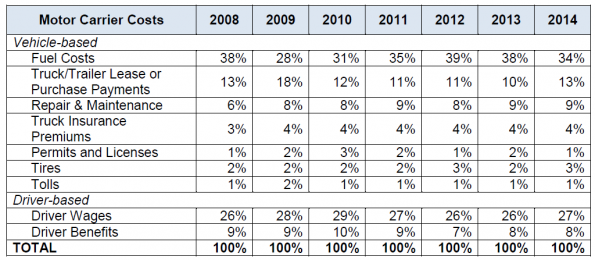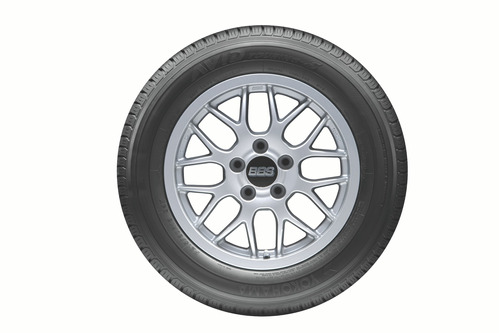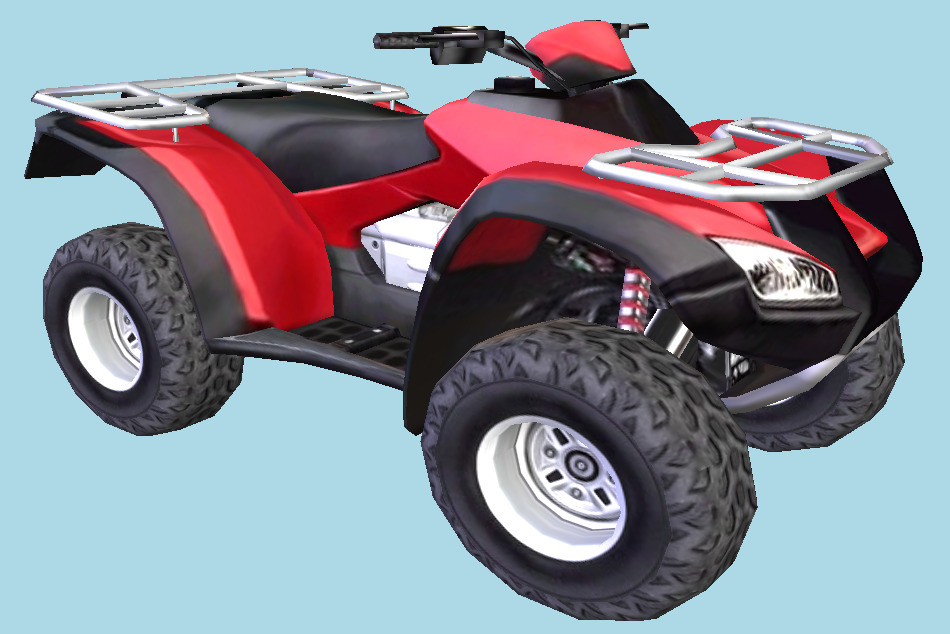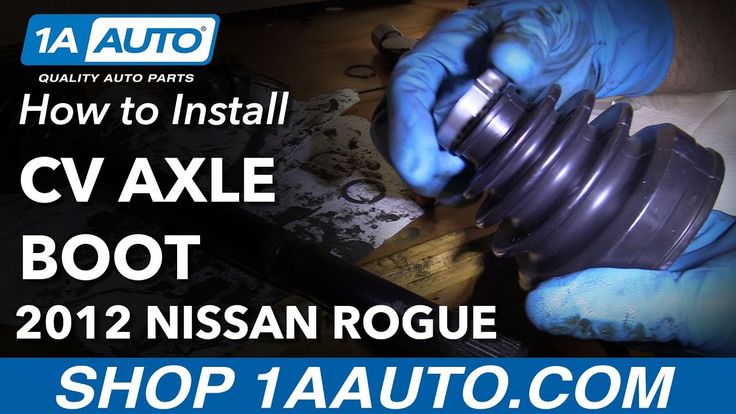This article will review compatibility issues and considerations when purchasing bicycle tires and inner tubes. Aspects of performance and the type of ride resulting from the choices will not be reviewed.
1
When selecting tires and inner tubes for a bicycle, it is important to get compatible components. There are many different tire and wheel sizes available. Unfortunately, the bicycle industry has not always had consistently clear nomenclature for tire standards.
Tires are made with a steel wire or fabric cord molded into each edge of the tire called the “bead”. The tire bead effectively forms a circle and the diameter of this circle determines the tire fit to the rim. The tire bead is sized to fit into the rim bead seat, which is the area below the outer rim edge.
BEAD OF TIRE AND BEAD SEAT OF RIMDo not attempt to mix tires and wheels with different bead seat diameters. Although the bead seat diameter determines the tire and wheel fit, there is little consistency between manufacturers in how tires are labeled or identified. Different countries at times have used different nomenclature in marketing and labeling their tires. This causes confusion when selecting a tire for a wheel and frustration when installing a tire.
An antiquated but still common system uses “inch” designations, such as 26-inch, 27.5-inch, 29-inch. The inch size does not refer to the bead seat diameter or measurement. In fact the number of the inch designation has no actual inch measurement associated with it. It is simply a code of the vaguely approximate outside tire diameter. For example, there are several 26-inch tires that use different bead seat diameters. A 26 x 1 3/8 inch tire, for example, will not interchange with the common MTB 26 x 1.5 inch tire. There are three even more obscure tire standards also referred to as 26-inch diameter, but none are interchangeable.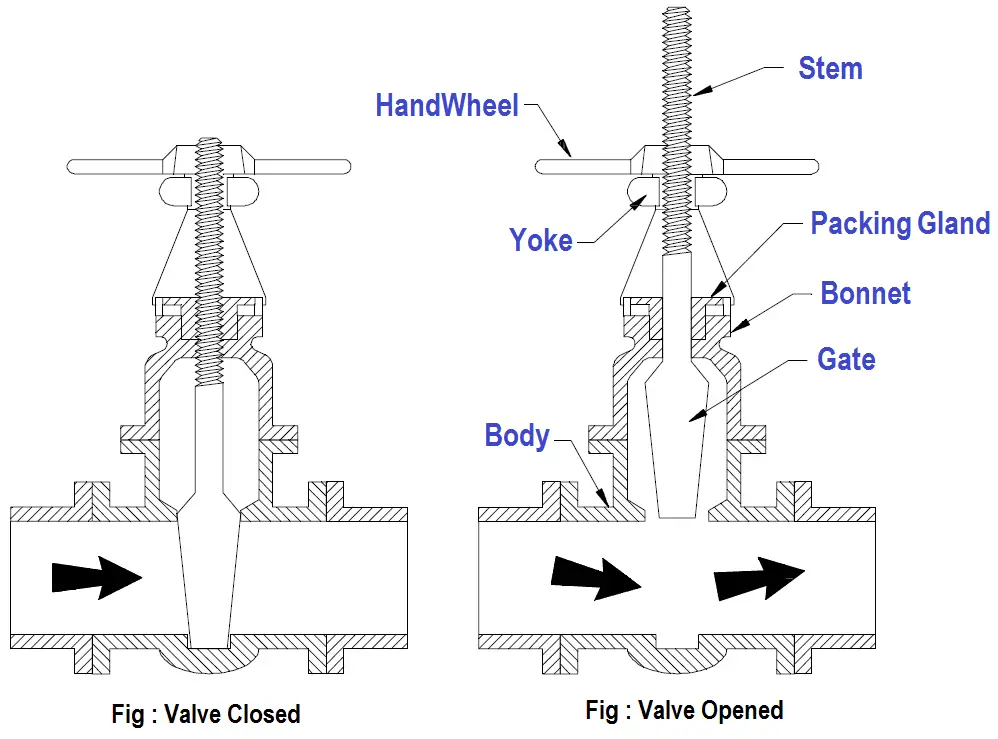 As a rule, tires marked with fraction sizes, such as 1/2, 3/4, etc., do not interchange with tires marked in decimal sizing, such as 0.5, 0.75, etc. For example, a 26″ x 1-1/2″ tire does not interchange with a 26″ x 1.5″ tire. There is not a logical reason for this system, it is simply what manufacturers have offered for nomenclature when selecting a tire.
As a rule, tires marked with fraction sizes, such as 1/2, 3/4, etc., do not interchange with tires marked in decimal sizing, such as 0.5, 0.75, etc. For example, a 26″ x 1-1/2″ tire does not interchange with a 26″ x 1.5″ tire. There is not a logical reason for this system, it is simply what manufacturers have offered for nomenclature when selecting a tire.
Another common yet misleading system is the older French system of sizing. The numbers are reference numbers and are not accurate measurements of anything. Road bicycles commonly use a 700c tire that has a bead diameter of 622 mm. The “700c” does not refer to bead diameter. The “c” is simply part of the code system. There are also 700a and 700b tires and wheels, but none interchange with the more common 700c. Additionally, the 650b tires and wheels will not interchange with the 650c tires. There is not a logical reason for this system, it is simply what manufacturers have offered for nomenclature when selecting a tire.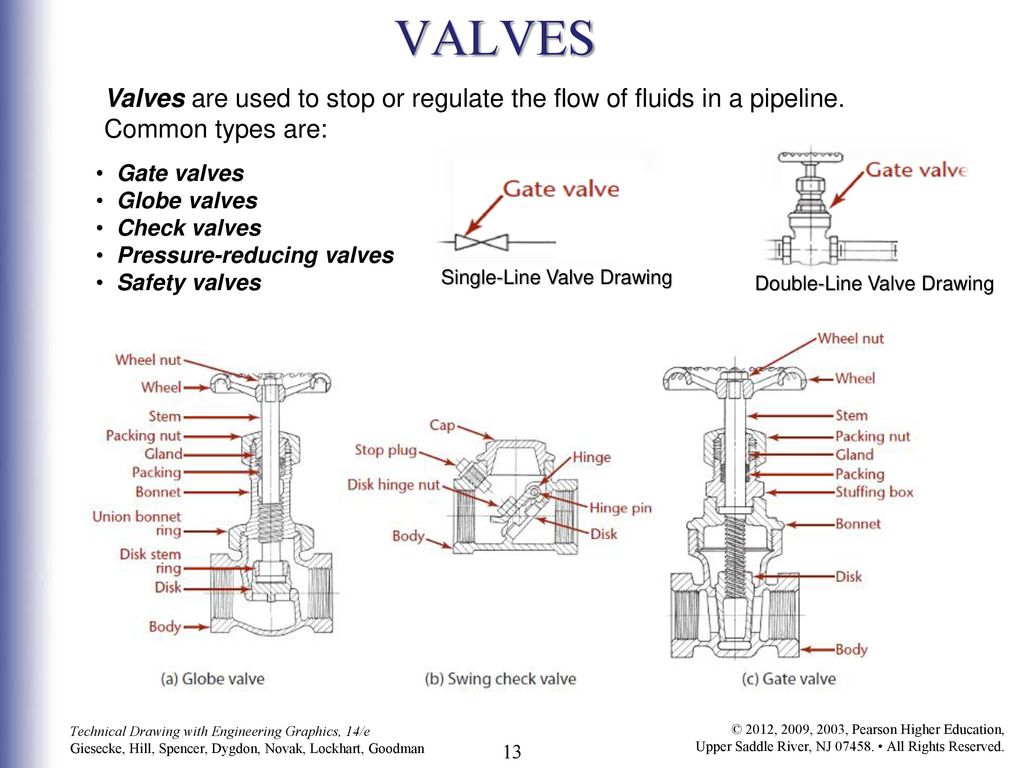
The ISO (International Standards Organization) system, also known as the ETRTO (European Tire and Rim Technical Organization) system, is now becoming more commonly used and understood. The ISO system uses a two number designations for both tire and rim sizing. The larger number is always the bead seat diameter. Rims and tires with the same number are made to fit one another. For example, tires marked 622 will fit rims marked 622, because the bead seat diameter is 622 millimeters for both. Look for this sizing system on the tire.
Rims also come labelled in ISO sizing, in the form of a two number system. The smaller number is the width in millimeters inside the rim sidewalls. Generally, a wider rim will accept a wider tire. A narrow tire on a relatively wide rim will mean the tire profile shape will be less rounded. A wide tire on a narrow rim will result in less support for the tire in cornering, which can cause the tire to laterally roll or twist.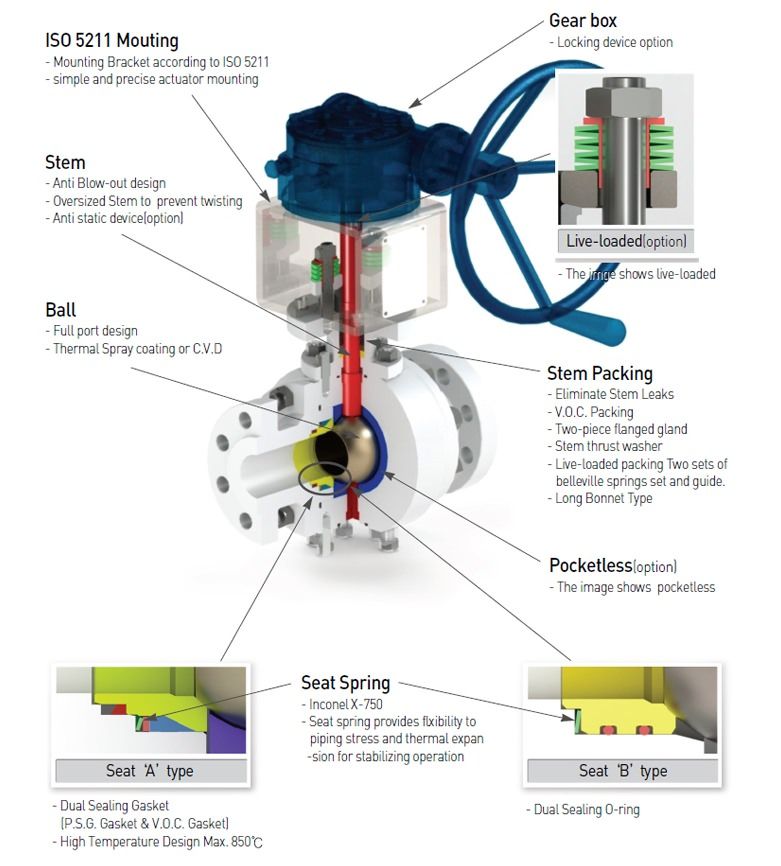 Additionally, rim caliper brakes will have very little room to clear the tire with a very wide tire on a very narrow combination. As a loose rule, the ISO tire width should be between one and a half to two times the ISO rim width. A rim with a width of 25mm between the sidewalls should use an ISO tire width of about 37–50mm.
Additionally, rim caliper brakes will have very little room to clear the tire with a very wide tire on a very narrow combination. As a loose rule, the ISO tire width should be between one and a half to two times the ISO rim width. A rim with a width of 25mm between the sidewalls should use an ISO tire width of about 37–50mm.
Another consideration in selecting tires is the frame and fork. Although a tire might be correctly and safely fitted to a rim, the frame may lack clearance for the size. Inspect the bike if you are changing to a larger tire profile.
2
There are three types of valve stems on bicycles, Schrader, Presta and Woods (“Dunlop”).
Valve Stem Types (L-R): Schrader, Presta, Woods (Dunlop)The Schrader or “American-type valve” is common on cars and motorcycles. It is also found on many bicycles. The valve stem is approximately 8mm (5⁄16 inch) in diameter. The valve core consists of an internal spring plunger to assist in shutting the valve after inflation.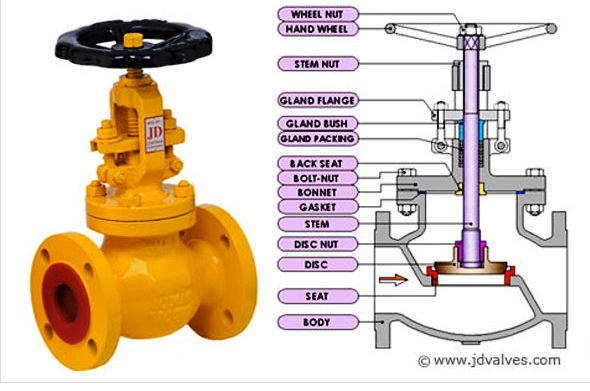 The length of the valve can vary and should be longer for tall or deep rims.
The length of the valve can vary and should be longer for tall or deep rims.
The Presta or French-type valve is common on mid- and higher-priced road bikes and on higher-priced mountain bikes. Presta stems are nominally 6mm in diameter and thinner compared to the Schrader valves. At the top of the Presta stem is a small valve locknut, which must be unthreaded before air can enter the tube.
Some brands of Presta tubes use a valve shaft that is fully threaded and usually include a locking nut or ring. These come with an extra locking nut or ring. Loosen the ring by hand and remove it before installing the tube. Install and fully inflate the tube. Then install the lockring and snug only by hand. When deflating the tube, loosen and remove the nut first.
Some makes and models of Presta inner tubes use a removable valve core. Inspect the end of the valve for two wrench flats. Use a valve core tool such as the Park Tool VC-1 or a small adjustable wrench to secure or remove the core.
Inner tube valve stems are available in different lengths. Rims with a very tall cross section require longer valve stems (60 mm or 80 mm). There are valve extenders available that screw onto the Presta valve and allow the tube to be inflated (figure 2.38). If the inner tube uses a removable valve core, use an extension that screws into the valve’s inner threads. There are also designs that are simply a tube to lengthen the stem but do not permit the Presta valve locking nut to be secured. If the locking nut cannot be closed, the valve may leak. Extenders that do not allow the valve nut to be tightened may allow the tube to leak slowly.
Left: removable valve core with double-threaded extender. Right: simple valve extender with lock nut looseThe wheel rim valve hole should match the valve of the tube. If a rim has been made with the smaller valve hole for Presta valves, it can be typically drilled and enlarged safely to the 8 mm size by using an 11⁄32 inch (8.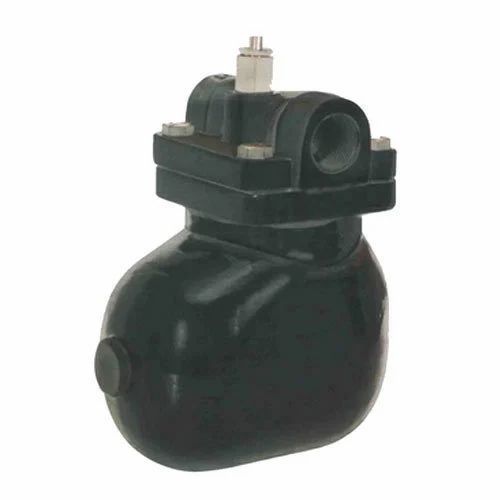 5 mm) hand drill. After drilling, use a small round file to remove any sharp edges. Rims that are less than 15 mm outside width should not be drilled. It is also possible to use the smaller Presta valve in a rim intended for the larger Schrader by using an adapter sleeve.
5 mm) hand drill. After drilling, use a small round file to remove any sharp edges. Rims that are less than 15 mm outside width should not be drilled. It is also possible to use the smaller Presta valve in a rim intended for the larger Schrader by using an adapter sleeve.
A third valve type is the “Woods” or Dunlop valve. These are seen on less expensive bikes outside the United States. The stem looks like a combination of a Schrader and a Presta stem. The top of the stem is narrow, with a large locking ring under it, and then the main shaft.
To deflate the Dunlop valve, partially unthread the nut. Pull on the tip of the valve if air is not already escaping. Remove the nut fully after the inner tube is deflated. Remove tire and tube as any other.
To inflate the Dunlop valve, use a Presta compatible pump head. Simply engage the head and inflate. Remove the head. There is no need to unthread the locking ring.
The tube should match the tire size diameter closely.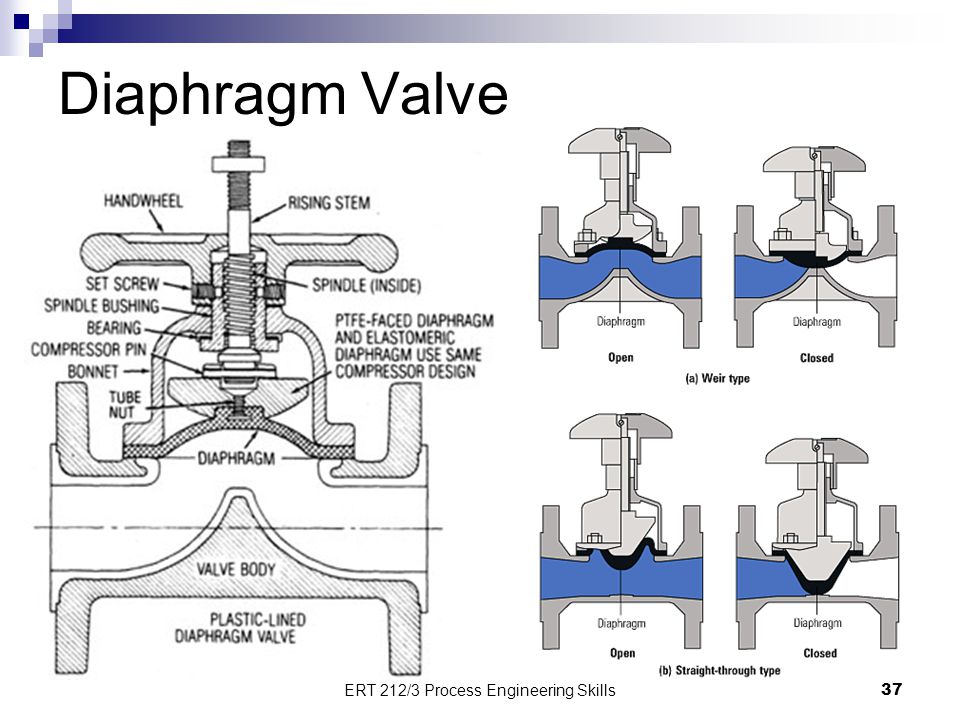 However, tires that are close in bead diameter may use the same inner tube. For example, an inner tube for an ISO 630 tire (27-inch) will also fit an ISO 622 (700c) tire.
However, tires that are close in bead diameter may use the same inner tube. For example, an inner tube for an ISO 630 tire (27-inch) will also fit an ISO 622 (700c) tire.
The inner tube should also match the tire width, but, because inner tubes are elastic, one inner tube may fit a range of tire widths. If the inner tube is too narrow for the tire width, it will become very thin when inflated inside the tire body. This will cause it to be more susceptible to punctures and failures. If the tube is too wide for the tire, it will be difficult or impossible to properly fit inside the tire casing and seat in the rim. Part of the tube may stick out of the tire and blow out when the tire is fully inflated.
3
The following table shows only some of the bicycle tires made. These are listed by ISO diameters (bead seat diameter).
| Tire Labels for Inch or French Standard | ISO (ETRTO) Bead Seat Diameter | Common Uses & Notes |
|---|---|---|
16″ x 1″ to 2. 2″ 2″ | 305 | Juvenile BMX bikes |
| 349 | Recumbent | |
| 18″ | 355 | BMX |
| 18″ | 400 | BMX |
| 20″ x 1″ to 2.2″ | 406 | Juvenile bikes, BMX, freestyle bikes, recumbents |
| 20″ x 1-1/2″ or 1-3/4″ | 419 | BMX, older Schwinn bikes |
| 20″ x 1-1/8″ and wider | 451 | BMX bikes |
| 24″ x 1.0″ to 2.0″ | 507 | Junvenile MTB bikes, some small road bikes |
| 24″ | 520 | BMX |
| 24″ x 1-3/8″ | 540 | Wheelchair tires |
| 24″ x 1-3/8″ | 547 | Older Schwinn tires |
| 26″ x 1.0 to 4.8″ | 559 | MTB bikes and fat tire bikes |
| 26″ x 1 1/2″. Also called 650C | 571 | Smaller road bikes, some specialty tri-athlete bikes |
27. 5″ or 650B 5″ or 650B | 584 | MTB Bikes in 27.5″ sizing |
| 26″ x 1-3/8″ | 590 | Commuter bikes |
| 26″ x 1-3/8″ | 597 | Older Schwinn bikes |
| 700c | 622 | Common road bike, hybrid and others |
| 27″ x 1-1/4″ | 630 | Older USA road bikes standard for mass market bikes |
Valve stems are a crucial part of any tire. Well, they are not part of a tire per se, but they are an auto part designed to ensure the tires’ safety and performance. Therefore, valves are important!
Valves keep air pressure from escaping tires. From valve cores to caps and versatile valve types, we will walk you through everything you need to know about valves and how said valves function.
The small tube system that you can use to fill your tires with air is called a valve stem.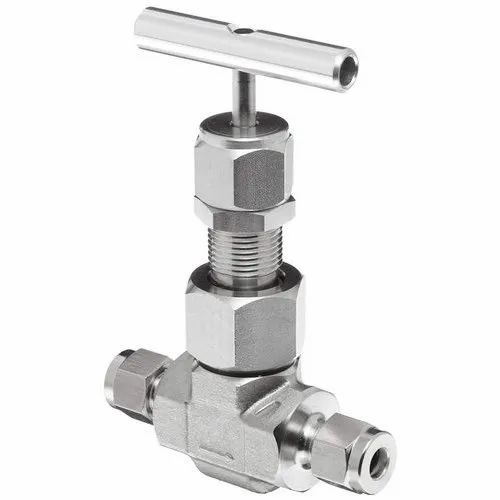 This system is basically a one-way door used to transfer gas (in this case air pressure) into a chamber (tire). Different valve types are available.
This system is basically a one-way door used to transfer gas (in this case air pressure) into a chamber (tire). Different valve types are available.
Valves are located on most pneumatic tires, from automobile to bicycle models. Tire valves are used to add or remove air pressure inside the tire. Once air pressure enters the tire, tire valves do not let it escape on their own.
A tire stem helps tires keep their optimal pressure levels, by using its different components. Valves consist of a valve stem body, a valve core, and a valve stem cap. These work together to keep the correct pressure levels inside the tires.
The various components of valves work together to enable the tire’s secure performance. Air pressure loss can occur if the valves are damaged. But, as long as they properly function, valves will hold air and guarantee the tires’ performance.
There are versatile types of tire valves available for purchase. The type you need greatly depends on various components: mainly what type of tire the valves are used on.
The type you need greatly depends on various components: mainly what type of tire the valves are used on.
There are three different tire air valve stems manufactured:
These have various applications! Let’s talk about them in more detail.
Probably the most common valve type is the tubeless rubber snap-in tire valve, as they are suitable for passenger cars, light-duty trailers, and various light trucks. Additionally, they can be used in autocross competitions as well.
These tire valves hold a maximum of 65 psi, as a cold tire inflation pressure. This valve stem size usually ranges between 0.7″ to 2.5″ and it can fit 0.453″ or 0.625″ diameter rim holes. Often they sport plastic valve stem covers, but some can be purchased with chrome sleeves or a metal tire pressure cap. However, this is merely for aesthetic purposes.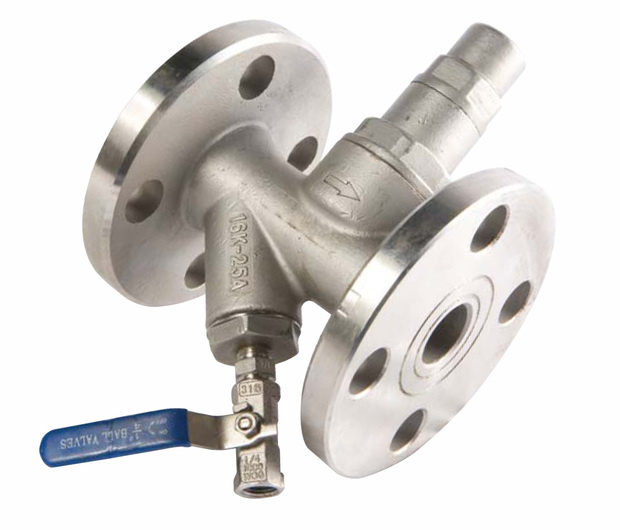
Check out this valve stem sizes chart:
The tubeless snap-in high-pressure tire valves function in the same manner as the previous type does. However, they are used for applications where the maximum pressure is above 65 psi. In other words, they are for medium- to heavy-duty trucks and trailers, that use pressure to handle larger weights.
These tire valves are made in two rim hole fittings: 0.453″ for tires with a max cold inflation pressure of 80 psi, and 0.625″ for those with 100 psi. Due to the vehicle applications, these valve stem sizes range between 1.25″ to 2″. High-pressure valve stems are designed for steel wheels. They are equipped with thick rubber snap-in bases, metal barrels, and plastic pressure caps.
Size chart of high-pressure, tubeless snap-in valves:
High-pressure metal valve stems are clamp-in models that use a rubber grommet, which seals the valve against the wheel when you tighten the holding nut.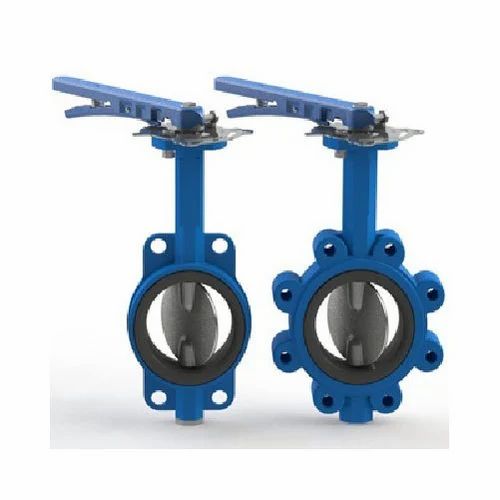 These valves are generally manufactured for high speed, racing vehicles, or for vehicles exceeding 130 mph.
These valves are generally manufactured for high speed, racing vehicles, or for vehicles exceeding 130 mph.
Most metal clamp-in tire valves are available for 0.453″ and 0.625″ rim holes. However, some special applications are available for 0.236″ and 0.315″ rim holes. Additionally, they come in straight or bent styles to accommodate even unique wheel shapes. These valves hold maximum cold tire inflation of 200 psi.
These valves have two fitting types: with the retaining (holding) nut inside or outside of the rim. For aesthetic reasons, many drivers prefer it to be hidden inside the rim. However, outer placements allow you to tighten the nut whenever it is necessary.
We have talked about the types of tire valves you can purchase for different vehicles. Now, let’s see their components.
Like most auto parts, valves also consist of multiple parts, which are:
These individual parts of valves work together to hold air in the tires.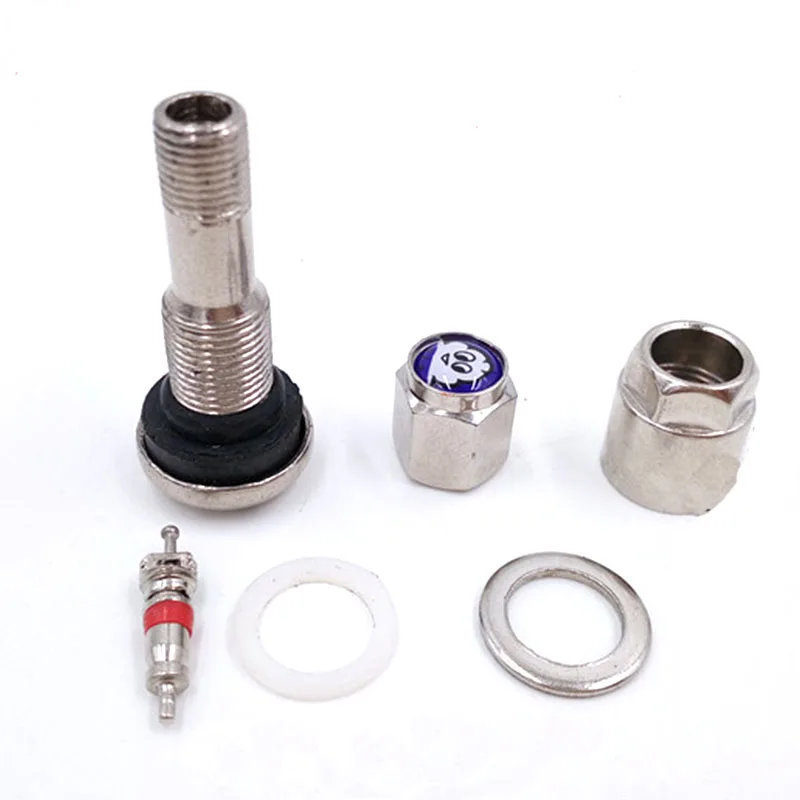 Some are crucial and some don’t have to be used. However, these parts working together will guarantee the vehicle’s secure drive.
Some are crucial and some don’t have to be used. However, these parts working together will guarantee the vehicle’s secure drive.
A valve cap should be used on all valve stems. There is a good reason for this! Moisture contamination and loss of air pressure at high speeds can cause problems. They can damage the valve core or cause the tire to do flat. However, a valve cap will help prevent these issues.
Tire valve caps are available to be manufactured from plastic, metal, or metal with a special screwdriver design. When these caps are used greatly depends on which vehicle they are on. When it comes to everyday driving, a plastic tire pressure valve cap should be enough. However, for racecar applications, a metal one is better. Tire stem caps are either knurled or hexagon-shaped to make them easier to remove.
While missing tire valve covers are not the end of the world, it is advisable to replace them. For one, it is a second seal that prevents pressure from escaping, in case valve core damage occurs.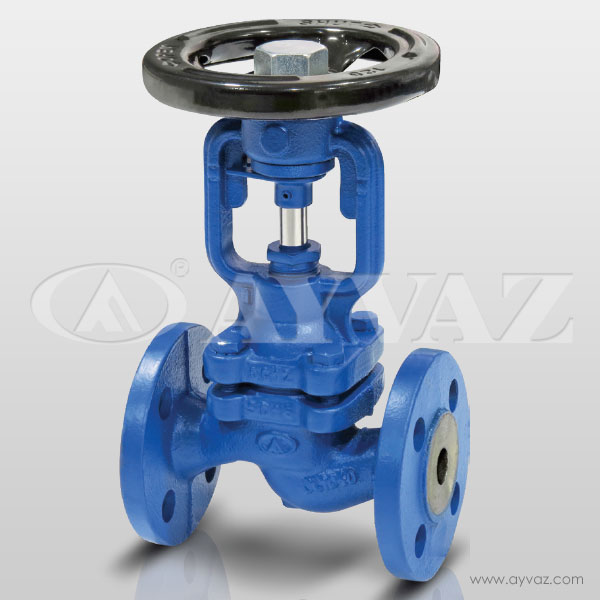 On the other hand, it also makes sure that sand, dirt, and moisture does not enter the stem and damage it.
On the other hand, it also makes sure that sand, dirt, and moisture does not enter the stem and damage it.
A valve core is the main seal inside the stem. This part of the stem seals tire pressure inside the tire, preventing it from escaping. It should be tightly screwed into the valve core chamber. They are manufactured with shorter (for high speed applications) and longer lengths, and nickel-plated and brass valve cores are available.
It is important that you only use a nickel-plated valve core with an aluminum tire pressure sensor valve stem. This is due to brass valve cores in such applications experiencing corrosion that can transfer and affect the aluminum wheel as well. This is to protect the wheel and its integrity.
These valve cores basically consist of a spring-loaded pin that is moveable. This allows air pressure to inflate and deflate the tires. This valve stem seal prevents pressurized air from escaping the tires when the caps are off.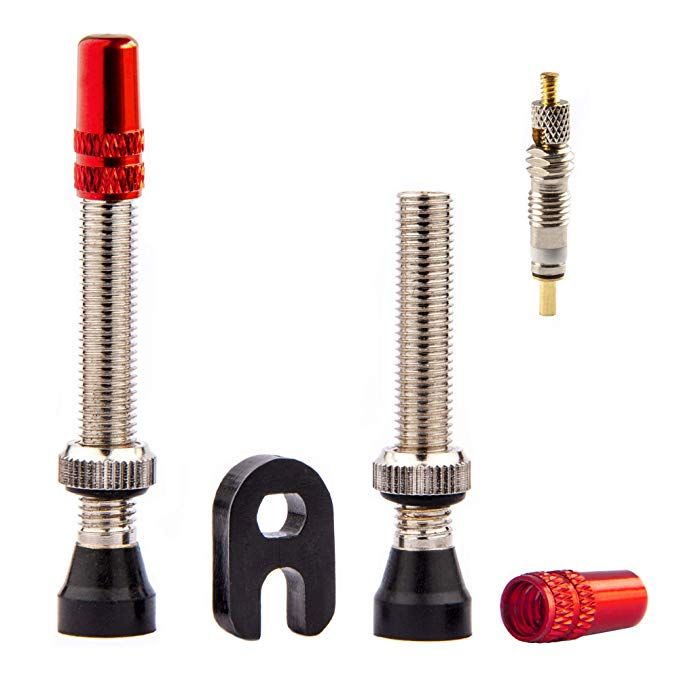 The valve stem core is durable, but dirt, moisture, and sand can damage it. Dirt and sand will prevent valve cores from sealing properly, while moisture will freeze and damage the valve cores.
The valve stem core is durable, but dirt, moisture, and sand can damage it. Dirt and sand will prevent valve cores from sealing properly, while moisture will freeze and damage the valve cores.
If you fit wheel covers on your car, you can use valve extensions to make the inflation process easier. These nylon or metal extenders are available in sizes between 0.5″ and 2″.
It is important to select the ideal extension length or to purchase durable, preferably metal, ones. Road and weather conditions and driving habits can easily damage these extensions, which will leave to other issues.
If your vehicle uses direct TPMS sensors, then the valve stems also hold the sensor inside the tire. Mechanics do this with metal clamp-in or rubber snap-in valves. These TPMS sensor tire valve stems work together to transmit information to the TPMS monitor.
The two different TPMS stem types function a bit differently. Let’s see how!
A clamp-in valve stem-sensor combination fits the sensor with a rubber seal and a retaining.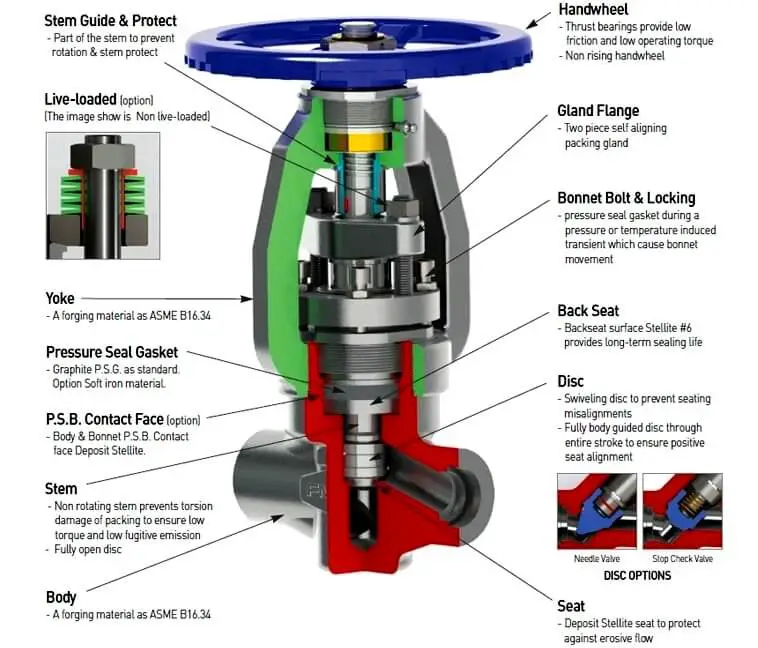 These two parts, along with the valve cores and caps, need to be tightened correctly, in order to prevent pressure loss.
These two parts, along with the valve cores and caps, need to be tightened correctly, in order to prevent pressure loss.
These TPMS rubber valves need nickel-plated valve cores to prevent damage. Galvanic corrosion can damage brass cores, which will transfer onto the aluminum barrel with time – leading to even bigger damage.
The other type of TPMS sensor tubeless tire valve is the rubber snap-in version. These accept TPMS sensors can be different, and purchasing valve stems that accommodate them in crucial.
If the TPMS stems are not compatible, it will lead to air pressure loss. Using the correct combination of valves and TPMS sensors will ensure a safer driving experience.
Have you ever noticed a vehicle with green valve stem caps?
Well, there is a reason for their distinct color! These valve stem seals keep the pressure inside of nitrogen-filled tires. Many believe that adding nitrogen in tires improves their performance, durability, fuel economy, etc.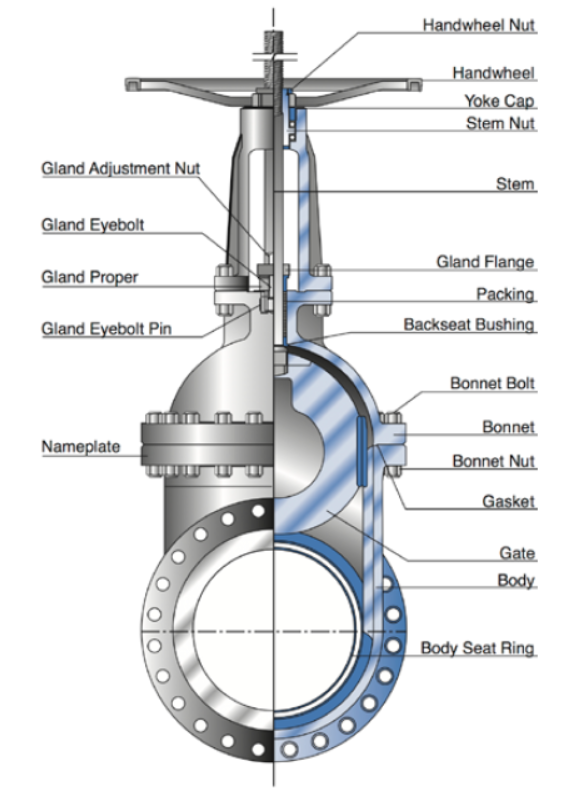
Therefore, nitrogen valve stem caps are green!
Are Valve Stems Replaced with New Tires?
Usually, when mounting new tires on a vehicle, it is advisable to get new valve stems for tires as well. However, when you purchase new tires, the tire valve stem is not included.
The valve stem sizes you need depend on the rim size. Low-profile rims (up to 0.9″) will need a 1.5″ stem while a 1.3-1.7″ rim should have a 2.3″ valve stem. Anything taller than 1.9″ needs at least a 3.1″ valve stem to properly function.
To find a slow leak in a tire, you will needs a spray bottle and soapy water. Mix liquid soap and water in a spray bottle and spray the entire tire (sidewalls, tread area, along the rim, and the valve stem). The slow leak will be there the soapy water forms small bubbles with the escaping air.
Air pressure escapes the tire when the valves are open because of the different pressure levels inside the tire and in the atmosphere. The high pressure of the tire flows out until the tire features the atmospheric pressure. This causes the tire to go flat.
The high pressure of the tire flows out until the tire features the atmospheric pressure. This causes the tire to go flat.
Atrac pioneered the design and manufacture of economical high performance engine valves for various applications. We have the capability and capability to design and supply high performance engine valves as per your requirement according to the chemical and metallurgical specifications you specify.
The intake and exhaust valves used in an internal combustion engine are made from different materials to suit different conditions. Intake engine valves are made of silicon alloy steel and exhaust valves are made of chromium-nickel silicon alloy steel (for high temperature and high voltage service). Engine valves are also available with a liquid nitriding process or hard chrome plating, which increases stem surface hardening. With every valve design, we aim to maximize durability through higher fatigue and tensile strength.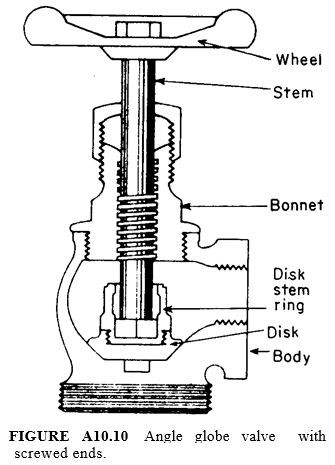 9Ol000 -52
9Ol000 -52
48 to 53
54 to 57
 M.ENGINE
M.ENGINE contact us
Solenoid valve stem, stainless steel, with chemical resistant O-ring. It is selected according to diameter, height, throughput, as well as other characteristics, taking into account the series of solenoid and electromagnetic coil.
Suggested stems only fit Smart solenoid valves.
When choosing a solenoid stem, the following valve parameters are important:
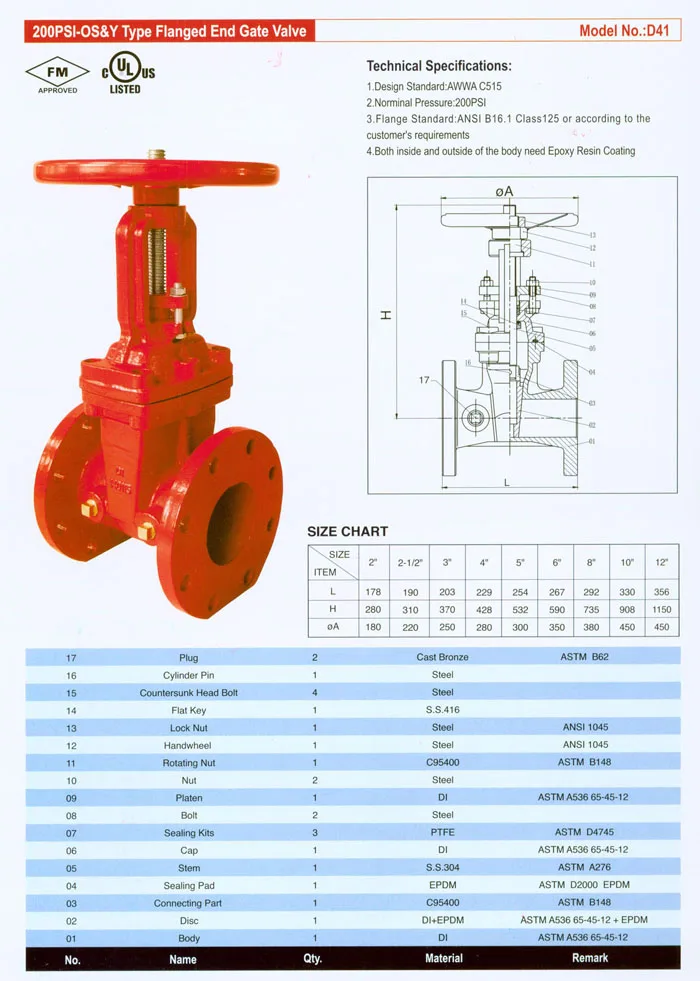
Each solenoid stem series corresponds to a specific solenoid valve series.
To buy a solenoid valve stem as a repair kit or spare part for a new solenoid, fill out the order form on the website. For advice on products, payment methods and delivery, please contact the sales department at the phone number listed at the top of the page. To calculate the list of stop valves for a specific network of an object, write to us by e-mail.



